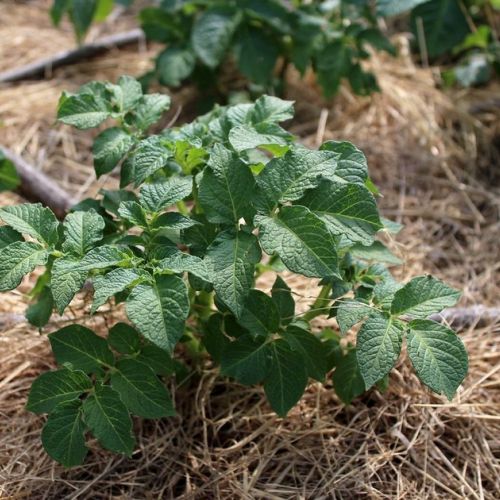Vegetable Garden: Everything You Need To Know About The Blue Tomato In 5 Questions
If you like to make colorful summer salads, you probably know about red, yellow, green or even black tomatoes. But have you heard of blue tomato varieties? We suggest you discover the amazing blue tomato in 5 questions.
1- Is this tomato really blue?
The variety that started the blue tomato craze is called Osu blue. It should be noted, however, that when they ripen, the fruits of this variety are not sky blue but rather an almost black indigo...
Blue tomatoes show shades of green and dark purple when young and turn red and indigo when ripe. Only the parts of the fruit exposed to sunlight turn blue.
As for the flesh, it is green before maturity and takes a red, dark pink or yellow tint depending on the variety.
To note: the blue tomato should not be confused with the black tomato. Blue varieties are distinguished from black tomatoes such as Crimean Black by their anthocyanin content, antioxidants also found in blueberries and black currants for example.
Black tomatoes, on the other hand, owe their dark red to purple color to other pigments called lycopenes.
2- What is the origin of the blue tomato?
The first blue tomato variety called Osu blue was obtained by crossbreeding in 2004 by Jim Myers, a professor at the University of Oregon in the United States.
To obtain blue-skinned fruits, this professor cross-pollinated domestic tomatoes with a wild Peruvian species of the Solanaceae family, whose fruits are rich in anthocyanins but unfortunately tasteless.
He thus obtained a cocktail tomato producing clusters of 6 to 8 round fruits about 5 cm in diameter and named it OSU (for Oregon Student University).
Following this first trial, other variety developers got hold of Osu blue seeds and in turn made crosses that resulted in other blue tomato varieties.
3- What are the different varieties of blue tomatoes?
Osu blue is a cocktail tomato variety that offers round, 5 cm diameter fruits with pinkish red flesh of medium flavor. Because it is a cross with a wild species, it is a vigorous variety with good hardiness and disease resistance.
Another blue cocktail tomato variety is the Indigo Apple. It produces round fruits with red, juicy flesh.
If you are looking for larger tomatoes to grow in your garden turn to the varieties instead:
- Indigo Blue Beauty which yields somewhat flattened, ribbed fruits averaging 120-250g. Their flesh is pink, juicy and well tasted.
- Indigo Blue Green Zebra which is from a cross with Green Zebra. It produces half-green, half-purple fruits with green flesh and a sweet flavor.
Finally note that there are blue cherry tomatoes such as:
- Indigo Bosque Blue with dark red flesh that is quite sweet
- Indigo Clackamas Blueberry with tasty bright red flesh.
You can buy seeds of these blue varieties and more on the Kokopelli Association website (see link below).
4- What is the advantage of growing blue tomatoes?
It may seem a bit pointless to grow blue tomatoes in the garden when you already have the embarrassment of choice between many varieties known for their productivity and taste qualities.
Gardeners generally prefer the Coeur de boeuf tomato for its high sugar content as well as the tasty Marmande tomato and the very productive Saint-Pierre.
While these red varieties are undeniably among the best tomato varieties, that doesn't stop you from growing varieties in other colors like the Green Zebra and the Pineapple Tomato to add color to your dishes and summer mixed salads!
In this game of colors, the blue tomato has no equal to surprise your guests. If you want the fruit skin to turn blue, you simply install your tomato plant in full sun. Also consider cutting some leaves so that the UV rays penetrate to the fruit and stimulate the production of anthocyanins.
But their amazing color isn't the only good reason to grow blue tomatoes! As we explained to you above, the kinship of these tomatoes with a wild species gives them good resistance to cold and disease.
Finally, thanks to their high anthocyanin content, these tomatoes are good for your health! They are rich in antioxidants even though they do not contain as many blue pigments as blackcurrants for example.
5- When is the blue tomato ripe?
With tomato varieties in unusual colors, it is not always easy to know when the fruit is ripe. Yet, it is very important to pick blue tomatoes when they are fully ripe in order to enjoy their taste.
To harvest them at the right time, observe the darkest areas on their skin. The blue tomato is ripe when its bright black areas turn dull purple.
Because this variety is rather late, the first harvest usually occurs in early August and production continues when other tomato varieties have already finished fruiting.







